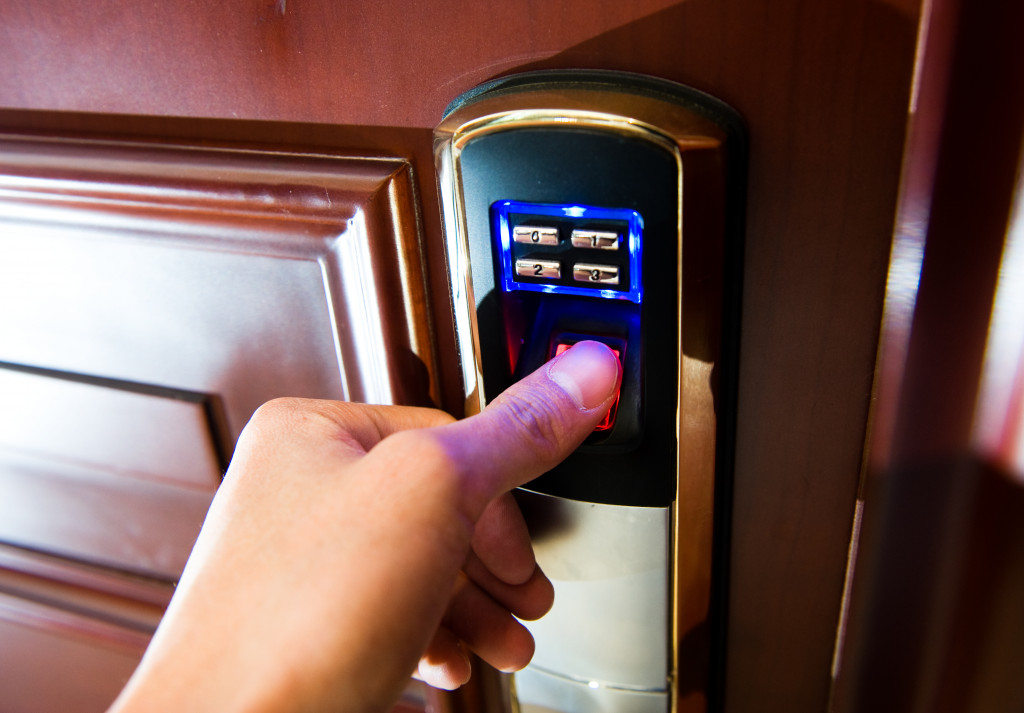- Understanding the neighborhood and community is crucial for safety in a new apartment.
- Meeting and getting to know your neighbors can create a mutual safety network
- Conducting a thorough assessment of your apartment’s vulnerabilities is essential.
- Consider an EPT door hardware replacement to enhance door security
- Establish emergency preparedness protocols and conduct regular maintenance checks for ongoing safety
Moving into a new apartment is an exciting journey, beginning a new chapter in life. Amidst the thrill of settling into a new space, it’s crucial not to overlook one aspect that will ensure peace of mind in your new home: safety.
Many new tenants face understandable concerns ranging from neighborhood security to the reliability of their apartment’s safety features. This guide will walk you through essential steps to secure your new environment, allowing you to enjoy your new home confidently and easily.
Understanding Your New Environment
The foundation of feeling secure in your new apartment lies in understanding the environment around you. This knowledge isn’t just about what’s inside your living space but extends to the larger community area that will now be a significant part of your daily life.
Get to Know the Neighborhood
Your immediate neighborhood is your first line of defense and your closest convenience. Spend the first few days exploring. Identify the nearest emergency services, such as the police station, fire station, and hospital. It’s also wise to understand the general atmosphere of the community.
Are the streets well-lit at night? What’s the foot traffic like? Are there any areas that seem neglected or might pose a risk? This initial assessment isn’t about scaring yourself; it’s about being informed and aware of your surroundings.
Meet Your Neighbors
While the modern world has people believing they should mind their business, there’s undeniable safety in numbers. Introduce yourself to your neighbors. These initial interactions build a sense of community, often leading to a neighborhood watch mentality.
Neighbors can monitor your apartment when you’re away, collect your mail, or notice if any strangers are lurking around. In turn, you can offer similar support, creating a mutual safety network.
Securing Your Apartment

Once familiarized yourself with your new surroundings, it’s time to turn your attention to your apartment. While it may seem safe at first glance, conducting a thorough assessment of your new home is crucial to address every potential vulnerability.
Assessing Potential Vulnerabilities
Start with a detailed inspection of your new home. Check all windows to ensure they lock correctly and are free from damage. Balconies should be secure, and fire escapes should be accessible without posing an easy entry point for potential intruders.
It’s essential to look for any areas that may have been overlooked, from a bathroom window not closing properly to a back door that might need extra reinforcement.
Enhancing Door Security
The main door is one of the most critical aspects of your apartment’s security. It’s not just about having a lock; it’s about the quality of the door’s hardware and its ability to withstand unwanted entry.
This is where considering an EPT door hardware replacement comes into play. By upgrading to high-quality door hardware, you’re investing in materials designed to withstand more pressure and manipulation, ultimately making your door more difficult to breach. It’s a change that significantly improves the security barrier between your home and any potential outside threats.
Establishing Safety Protocols
After bolstering the physical security of your apartment, it’s vital to establish safety protocols. You put These practices and plans in place to prepare for any unforeseen circumstances. While no one likes to think about emergencies, having a plan ensures you’re not caught off guard, which can make all the difference in ensuring your safety and that of your belongings.
Emergency Preparedness
In the event of an emergency, every second counts. Prepare a list of essential emergency numbers and keep them in an easily accessible location, including local police, fire department, nearest hospital, and a trusted neighbor. Additionally, familiarize yourself with the quickest routes out of your apartment building and where to seek immediate shelter within your building if getting out is not an option.
Regular Maintenance Checks

Safety in your home is an ongoing responsibility. Make it a habit to perform regular checks on all your safety installations. Ensure your door locks function correctly, your windows are secure, and your smoke detectors are operational. If your apartment complex has security cameras or a security guard, ensuring these measures are consistently functional is wise.
Conclusion
Ensuring your safety when moving into a new apartment requires awareness, preparation, and proactive behavior. Understanding your environment, securing your living space, and establishing solid safety protocols create a secure foundation for your new home. Remember, the goal is not to foster fear but to promote preparedness and peace of mind. By taking these steps, you can focus on enjoying your new beginning and making your apartment a proper home.

